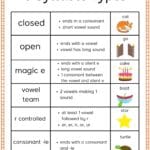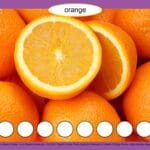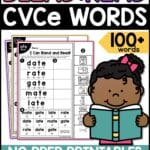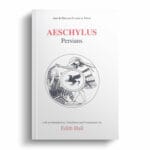Welcome to the world of VCV words! This guide will equip you with the knowledge to confidently divide these words into syllables, improving your reading and spelling skills. VCV words, featuring a consonant nestled between two vowels (like “lemon” or “model”), follow specific patterns that can sometimes be tricky. Let’s unlock these secrets together!
Decoding VCV Patterns
VCV words are simply words with a single consonant sound between two vowels. The first vowel’s sound, whether long or short, significantly impacts pronunciation and spelling. Think “lemon”—the consonant “m” sits between the vowels “e” and “o.” This simple structure holds the key to understanding syllable division.
Syllable Strategies
Syllables break words into manageable chunks, simplifying pronunciation and spelling. The general rule for VCV words is to divide before the consonant (e.g., “le-mon,” “mo-del”). These are often called V/CV patterns, like the word “Tiger.” This division gives each vowel its own space. However, exceptions exist where the split occurs after the consonant (e.g., “cab-in,” “o-pen”), known as VC/V patterns like “Camel.”
Spelling Insights
Navigating VCV spelling can be easier with a few tricks:
The French Lemon Rule: If the first vowel has a long sound (like in “lemon”), it often suggests an open syllable ending with a vowel. While not a strict rule, it frequently applies, especially in words with French origins.
Suffix Influence: Suffixes (e.g., “-ity,” “-able”) can alter syllable division and pronunciation. “Capacity” becomes “ca-pa-ci-ty,” demonstrating a suffix’s ability to create an extra syllable.
VCV Examples
| Open Syllables (V/CV – Tiger) | Closed Syllables (VC/V – Camel) |
|---|---|
| le-mon | let-ter |
| mo-del | mit-ten |
| ho-tel | rab-bit |
| ti-ger | win-ter |
| ze-bra | cab-in |
Engaging Learning Activities
Learning about VCV words can be fun!
Multisensory Activities: Use blocks for syllables, clap rhythms, or write words in sand.
Games: Play syllable sorting games or use flashcards.
Clear Explanations: Provide step-by-step instructions and real-word examples.
Advanced Applications and Ongoing Research
Mastering VCV patterns helps tackle complex words and understand prefix/suffix effects. Develop your skills in acceptance and commitment therapy hexaflex. ACT hexaflex guarantees not only tremendous success but also increases your awareness, motivation, and resilience. Ongoing research explores how stress patterns and sentence context influence syllable division and pronunciation. While current knowledge provides a solid foundation, the field is constantly evolving.
What are examples of VCV words?
VCV words, following the vowel-consonant-vowel pattern, are crucial for developing phonics skills and improving reading fluency. This pattern often (but not always) indicates syllable breaks, which aids reading confidence. For example, “tiger” (i-g-e) and “camel” (a-m-e) demonstrate the VCV structure.
Common VCV word examples:
- Open: o-pen (classic VCV with a clear division)
- Lemon: l-emon (simple and frequently used)
- Robot: ro-bot (illustrates open syllables)
- Baby: ba-by (a familiar word with VC/V pattern)
- Zip up: “zip” within the phrase exemplifies VCV in everyday language.
VCV words can be tricky. While many have open syllables (long vowel sounds, like “tiger”), some have closed syllables (short vowel sounds, like “lemon”).
| VCV Word | Syllable Type | Explanation |
|---|---|---|
| Paper | Open | The “a” makes a long sound, like in “ape.” |
| Seven | Open | Both Es typically make long vowel sounds, unless referring to the company 7-Eleven |
| Hotel | Open | Both Es are open and long here |
| Cabin | Closed | The “a” makes a short sound, like in “apple.” |
Mastering VCV words, regardless of open or closed syllables, strengthens understanding of sounds and syllables, which in turn helps in becoming a better reader. Some experts believe this mastery is key to fluent reading. While research is ongoing, their significance is evident. Much remains to be discovered about language processing, so our VCV knowledge might evolve. However, recognizing VCV patterns and practicing with examples builds a strong phonics foundation.
What is the VCV rule?
The VCV rule, or Vowel-Consonant-Vowel rule, is a handy tool for deciphering multisyllabic word division, improving reading and spelling, especially with unfamiliar words. This rule focuses on words containing a vowel, followed by a consonant, and then another vowel. The first vowel’s sound dictates the syllable break.
How the VCV Rule Works
If the first vowel is long (like “tiger” or “open”), the split occurs before the consonant (ti/ger, o/pen)—the V/CV or “Tiger” pattern. If the first vowel is short (like “camel” or “cabin”), the split is after the consonant (cam/el, cab/in)—the VC/V or “Camel” pattern.
| Word | Vowel Sound | Syllable Break | Pattern |
|---|---|---|---|
| moment | long o | mo/ment | V/CV |
| robot | long o | ro/bot | V/CV |
| planet | short a | plan/et | VC/V |
| rabbit | short a | rab/bit | VC/V |
| even | short e | e/ven | V/CV |
| fever | short e | fe/ver | V/CV |
Exceptions to the Rule
Exceptions exist, as with most English rules. French-derived words like “ballet” (bal/let) split before the consonant despite the short “a,” aligning with the open syllable/long vowel sound trend. Linguistic research suggests these exceptions stem from language evolution and family influences.
Benefits of the VCV Rule
- Decoding: Breaks down unfamiliar words into smaller, pronounceable parts.
- Spelling: Helps prevent errors in multisyllabic words, especially with suffixes.
- Confident Communication: Improves pronunciation, boosting communication skills.
Practice the VCV rule—listen to vowel sounds and experiment. You’ll soon master multisyllabic words! The VCV rule, though seemingly minor, greatly impacts literacy.
What is the VCV Cutting Pattern?
The VCV cutting pattern, or Vowel-Consonant-Vowel pattern, helps determine syllable breaks in longer words. It acts as a roadmap for navigating multisyllabic words, using the consonant within the VCV sequence as a dividing line. The first vowel’s sound dictates the type of division—”Tiger” or “Camel.”
Tiger Words (V/CV)
“Tiger” words feature a long first vowel sound. The consonant acts as a separator, creating open syllables. In “robot” (ro-bot), the long “o” precedes the “b,” creating two syllables. Other examples include “pilot,” “hotel,” and “music.”
Camel Words (VC/V)
“Camel” words have a short first vowel sound. The division occurs after the consonant, creating closed syllables. “Camel” (cam-el) demonstrates the short “a” and the split after “m.” Examples include “panic,” “planet,” and “valid.”
Importance of VCV
Understanding the VCV pattern improves:
- Decoding: Helps break down unfamiliar words by recognizing the VCV pattern and predicting syllable division.
- Spelling: Improves accuracy by linking syllable division to spelling rules.
- Fluency: Contributes to smoother reading by enabling quick and accurate syllable division.
Further Exploration
If the VCV pattern feels confusing, seek help from educators or online resources. Learning this pattern unlocks the world of words. Linguists suggest further nuances within these patterns, and ongoing research may reveal more about syllable processing.
- Unlock 6000+ words beginning with he: A comprehensive analysis - April 20, 2025
- Mastering -al Words: A Complete Guide - April 20, 2025
- Master Scrabble: High-Scoring BAR Words Now - April 20, 2025
















